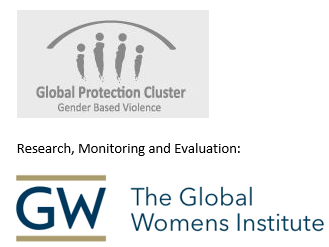- The IASC Guidelines for Gender-based Violence Interventions in Humanitarian Settings were developed by an IASC sub- working group in 2005 in order to enable humanitarian actors working in different sectors to plan, establish and coordinate a set of minimum interventions to prevent and respond to sexual violence during an emergency. The IASC GBV Guidelines provide a brief overview of activities to be undertaken in the preparedness and recovery phases and a more detailed list of activities to be implemented in the emergency phase of a humanitarian emergency. These guidelines are being updated in 2013 based on practitioners’ use and feedback, and new versions will replace the 2005 edition.
- The IASC GBV Guidelines are the key resource available to date for describing the different responsibilities of humanitarian actors to address VAWG in emergencies. The Guidelines hold all humanitarian personnel responsible for taking action, particularly against sexual violence in emergencies. They provide a list of actions per humanitarian cluster/sector (protection, water/sanitation, food security/nutrition, shelter/site planning, health/community services and education), as well as information about cross-cutting functions of all sectors (coordination, assessment and monitoring, protection, human resources and information, education, and communication). The list of interventions is accompanied by a set of key recommended resources. All VAWG actors should be familiar with the contents of the Guidelines. (For more information about sector-specific recommendations within the Guidelines, see Mainstreaming through Key Humanitarian Sectors/Clusters.)
- While the Guidelines are a critical tool for holding cluster/sector actors responsible in humanitarian settings, one of the limitations to the Guidelines is that they do not provide an overarching framework for VAWG actors to consider priorities for their work. As such, other models have been developed to provide both short-term and long-term recommendations for building VAWG prevention and response programming capacity in conflict and post-conflict settings.
Additional Tools
Gender-Based Violence Guidelines Introduction and Implementation Planning Package (IASC. 2009a). This package supports introduction of the IASC GBV Guidelines in field sites and facilitates a planning process to develop action plans for implementing the interventions and actions described in the guidelines. Available in English.
Checklist for Action: Prevention and Response to Gender-Based Violence in Displaced Settings, Adapted from a checklist developed by UNHCR, Geneva (RHRC Consortium/JSI Research & Training Institute, 2003). This checklist provides a basic summary of actions that can be taken to enhance protection of women and girls in humanitarian settings. Available in English.
